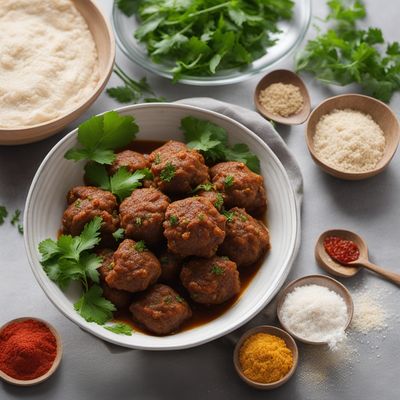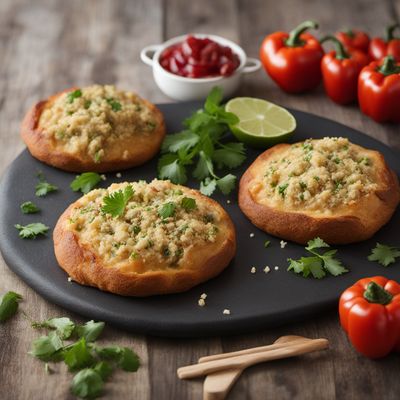
Ingredient
Oilseeds and oilfruits
Nature's Nutritional Powerhouses: Exploring Oilseeds and Oilfruits
Oilseeds and oilfruits encompass a wide variety of ingredients, including nuts, seeds, and fruits that are primarily cultivated for their oil content. They offer a range of flavors, textures, and nutritional profiles, with each type having its own unique characteristics. These ingredients are known for their high content of healthy fats, vitamins, minerals, and antioxidants, making them a nutritious choice for cooking and snacking.
Origins and history
The cultivation of oilseeds and oilfruits dates back thousands of years, with evidence of their use in ancient civilizations such as Egypt, Greece, and China. These ingredients have played a significant role in various cultures and cuisines throughout history. Today, oilseeds and oilfruits are grown in many countries around the world, including the United States, China, India, and Brazil. They are widely used in cooking, baking, and as a source of plant-based oils.
Nutritional information
Oilseeds and oilfruits are packed with essential nutrients, including healthy fats, protein, fiber, vitamins, and minerals. They are particularly rich in monounsaturated and polyunsaturated fats, which are beneficial for heart health. These ingredients also provide a good amount of plant-based protein, making them a valuable source for vegetarians and vegans. Additionally, they contain various vitamins and minerals, such as vitamin E, magnesium, and zinc, which contribute to overall health and well-being.
Allergens
There are no known allergens associated with oilseeds and oilfruits as a group. However, individual allergies to specific types of nuts or seeds should be taken into consideration.
How to select
When selecting oilseeds and oilfruits, look for ones that are fresh, dry, and free from any signs of mold or rancidity. For nuts, choose those that are plump, with intact shells and no visible cracks. Seeds should be clean, uniform in size, and without any discoloration. Opt for organic or sustainably sourced varieties whenever possible to ensure the highest quality and minimize exposure to pesticides.
Storage recommendations
To maintain the freshness and quality of oilseeds and oilfruits, store them in a cool, dry place, such as a pantry or cupboard. It is best to keep them in airtight containers or sealed bags to prevent exposure to moisture and air, which can cause them to become rancid. Some types of oilseeds and oilfruits, such as flaxseeds and chia seeds, are best stored in the refrigerator or freezer to maintain their nutritional properties.
How to produce
Growing oilseeds and oilfruits can be done in home gardens or larger-scale agricultural settings, depending on the type of ingredient. Many oilseeds and oilfruits can be grown from seeds or seedlings, with specific planting and care instructions varying for each type. It is important to provide the appropriate growing conditions, such as sunlight, water, and soil quality, to ensure optimal growth and yield.
Preparation tips
Oilseeds and oilfruits can be used in a variety of ways in the kitchen. They can be eaten raw as a snack, added to salads, or used as a topping for yogurt or oatmeal. They can also be roasted, toasted, or ground into a paste or flour for use in baking, cooking, or making spreads. Additionally, the oils extracted from these ingredients are commonly used for cooking, dressing salads, and as a flavorful addition to various dishes.
Substitutions
Oilseeds and oilfruits offer a wide range of flavors, textures, and nutritional profiles, making it challenging to find exact substitutes. However, in some cases, similar ingredients can be used as alternatives. For example, if a recipe calls for almonds, other nuts like walnuts or cashews can be used instead. Similarly, if sesame seeds are not available, poppy seeds or sunflower seeds can be used as a substitute. Experimenting with different ingredients can lead to exciting new flavors and textures in your dishes.
Culinary uses
Oilseeds and oilfruits are incredibly versatile and can be used in a wide range of culinary applications. They are commonly used in baking, such as in cakes, cookies, and bread. They can also be incorporated into savory dishes, such as stir-fries, salads, and grain bowls. Additionally, the oils extracted from these ingredients are widely used for cooking, frying, and as a base for dressings and sauces.
Availability
Oilseeds and oilfruits are cultivated in many countries around the world, including the United States, China, India, Brazil, Argentina, and Canada. The availability of specific types of oilseeds and oilfruits may vary depending on the region and climate. Some ingredients, such as almonds and sunflower seeds, are more widely available and can be found in most grocery stores and supermarkets.
More ingredients from this category
Recipes using Oilseeds and oilfruits » Browse all

Prosta Povitica - Balkan Nut Roll
Heavenly Nut-Filled Delight: Prosta Povitica

Makroudh: A Sweet Delight from Tunisian Cuisine
Golden Gems of Tunisian Delicacy: Makroudh - A Sweet Journey to Bliss

Azerbaijani Hertzoggie
Saffron-infused Delight: Azerbaijani Hertzoggie

Tuscan-inspired Kubdari with a Twist
Savory Tuscan Stuffed Bread: A Fusion of Georgian and Italian Flavors

Burmese-inspired Tropical Pizza
Mango and Coconut Pizza Delight

Homemade Steamed BBQ Pork Buns
Savory Pillows: Steamed BBQ Pork Buns

Chinese Steamed Piggy Buns
Fluffy Pork-Filled Delights: Chinese Steamed Piggy Buns

Surinamese Boxboles with a Twist
Spiced Meatballs Wrapped in Savory Dough: Surinamese Boxboles

Telugu-style Vegetable Pasteles
Spiced Veggie Parcels: A Telugu Twist on Puerto Rican Pasteles

Inca-inspired Quinoa Stuffed Bread
Andean Delight: Quinoa-Filled Bread with Inca Flavors

Homemade Mandu with Spicy Dipping Sauce
Savory Delights: Homemade Mandu with a Fiery Kick

Traditional Romanian Pască
Delightful Easter Cheese Pastry